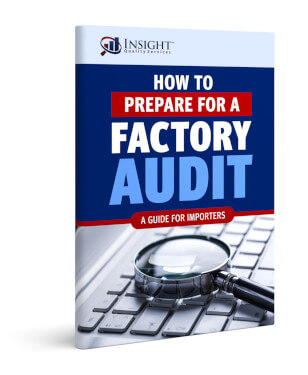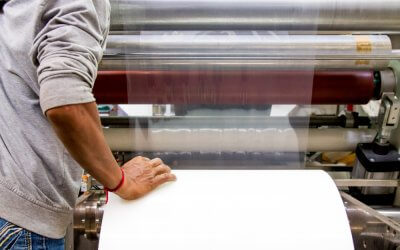Are you a consumer product importer or eCommerce seller looking for manufacturers or suppliers?
You may have come across the term BOM and been confused by it. You also may have asked yourself: what is a BOM, and do I really need to take a look at this document before doing business with a particular supplier?
This article presents answers to 5 common questions about the bill of materials (BOM).
Table of Contents
What is a Bill of Materials?
A BOM is a list that provides all the information on the parts, assemblies, and other materials required to build an entire product. This list gives you a clear picture of the processes and raw materials that go into the finished product.
Let’s take a look at some of the key information contained in a BOM.
What is the Key Information Contained in a Bill of Materials?
1. Level
The “level” is a unique number that shows the level of part or assembly within the BOM hierarchy. Products typically have single-level or multi-level assembly structure.
In a single-level assembly structure, the product is usually directly made from raw materials. In contrast, for a multi-level assembly structure, products typically have numerous sub-assemblies, with each sub-assembly having its own BOM.
2. Part Number, Name, and Description
The components (including sub-assembly) that make up an entire product are usually assigned a unique number, name, and description. These are important as they allow you to reference and identify parts quickly.
3. Unit of Measure
The BOM defines the measure in which each part is to be purchased or used, for example, tons, kgs, or inches.
4. Procurement
The BOM also provides information about how the individual parts are obtained. It will be stated whether they are produced, purchased off the shelf, or subcontracted out for manufacture.
What are the Types of Bill of Materials?
The BOM evolves throughout the product development process, going from a mere rudimentary list of components to a more complete manufacturing BOM. The three most common BOM you would likely come across are:
- engineering bill of materials (EBOM)
- manufacturing bill of materials (MBOM)
- sales bill of materials (SBOM).
Each of these documents is suited for different projected uses and business needs. An EBOM shows the component structure in a functional perspective, such as the mechanical drawing of the product. It is used throughout the design process and is usually organized by the engineers based on a computer-aided design (CAD) drawing.
A manufacturing BOM provides a list of all subassemblies required to make a shippable finished product. It takes into account wastage and other consumables used in the production. A sales BOM provides details of the product in the sales stage and prior to assembly.
Why Should You Obtain the Bill of Materials From Manufacturers?
It is a common practice for manufacturers located in the US to provide you with a product’s BOM. However, this is not always the case in low-cost manufacturing countries, including China. Despite this, you should try to obtain a BOM from the manufacturer, if you can.
Here are two important reasons why you should try to get your hands on this document.
1. Manufacturers Might Make it Harder for You to Leave Them
It’s normal for manufacturers or suppliers to market their products as being better than that of their competitors. But some will also try to “hook” you by making it difficult for you to switch suppliers. This is an especially common practice among manufacturers that do only assembly operations and add little to no value in the supply chain.
By obtaining the manufacturing BOM, you will get information about the manufacturer’s sub-suppliers, the prices of their components, and their profit margins. This makes it easier for you to switch suppliers and question their operations and associated costs.
2. You Could be Importing Low-Quality or Non-Compliant Products
OEMs and ODMs often try to improve their product’s efficiency and reduce production costs by modifying their products. Although these changes are sometimes minor, many manufacturers in low-cost countries will keep you in the dark while these changes are ongoing.
To complicate matters, some manufacturers even replace components with defective and inferior quality materials. This is what leads to the phenomenon of quality fade, and it means you could end up importing non-compliant products.
The BOM allows you to keep track of the changes made to a product, thereby helping you to ensure quality and compliance.
How do you get the BOM from a supplier?
The bill of material is a very confidential document, and the chance of getting your hands on this document is influenced by the type of suppliers you work with.
The reality is that OEMs and ODMs typically will not release this information. If you want to get the BOM, your best bet is to work with a contract manufacturer instead, which means you would need to control all aspects of product design. This may or may not be feasible for you, depending on the size of your business.
Now let’s discuss some final thoughts.
Conclusion
When you’re looking to do business with a manufacturer or supplier, you should try to get a bill of materials from your suppliers if possible. Having a BOM can help to ensure high-quality and cost-effective sourcing.
However, even if you’re not able to get your hands on one, you can take other actions to ensure product quality and compliance. These include putting together a quality control plan and conducting third-party inspections through a reliable service provider. At Insight, we provide these services and are happy to assist you if needed.
if you are planning to work with a new factory and want to learn more about how to assess their capabilities, we recommend downloading the following guide.
Free Guide
How to Prepare for a Factory Audit
A factory audit helps you assess a supplier's systems, capacity, workplace environment, or capabilities to ensure they meet your requirements as a buyer.
But which type of audit should you conduct, and which points should you cover on your checklist? In this free guide, you'll learn how to run an effective supplier assessment.





0 Comments